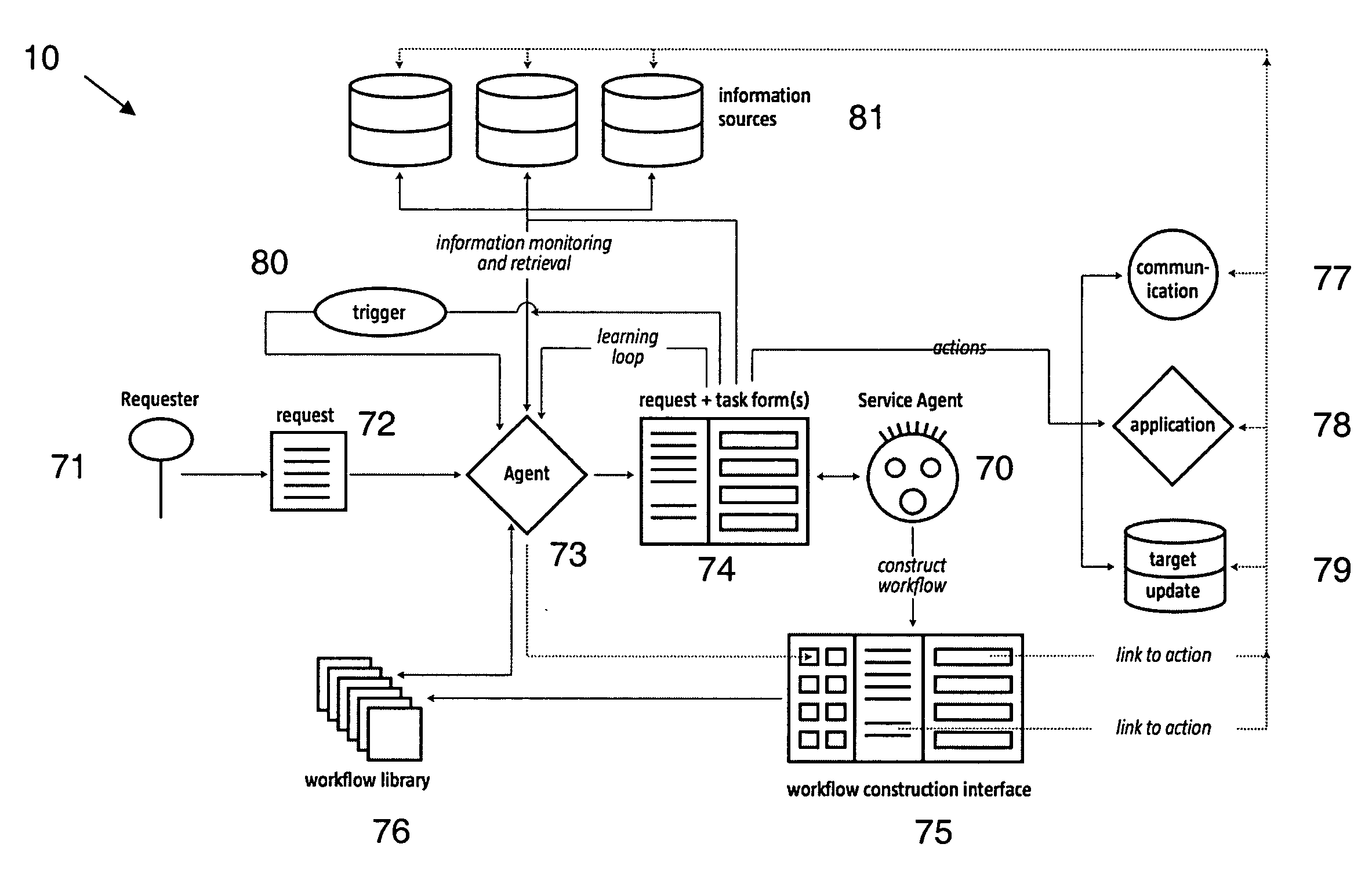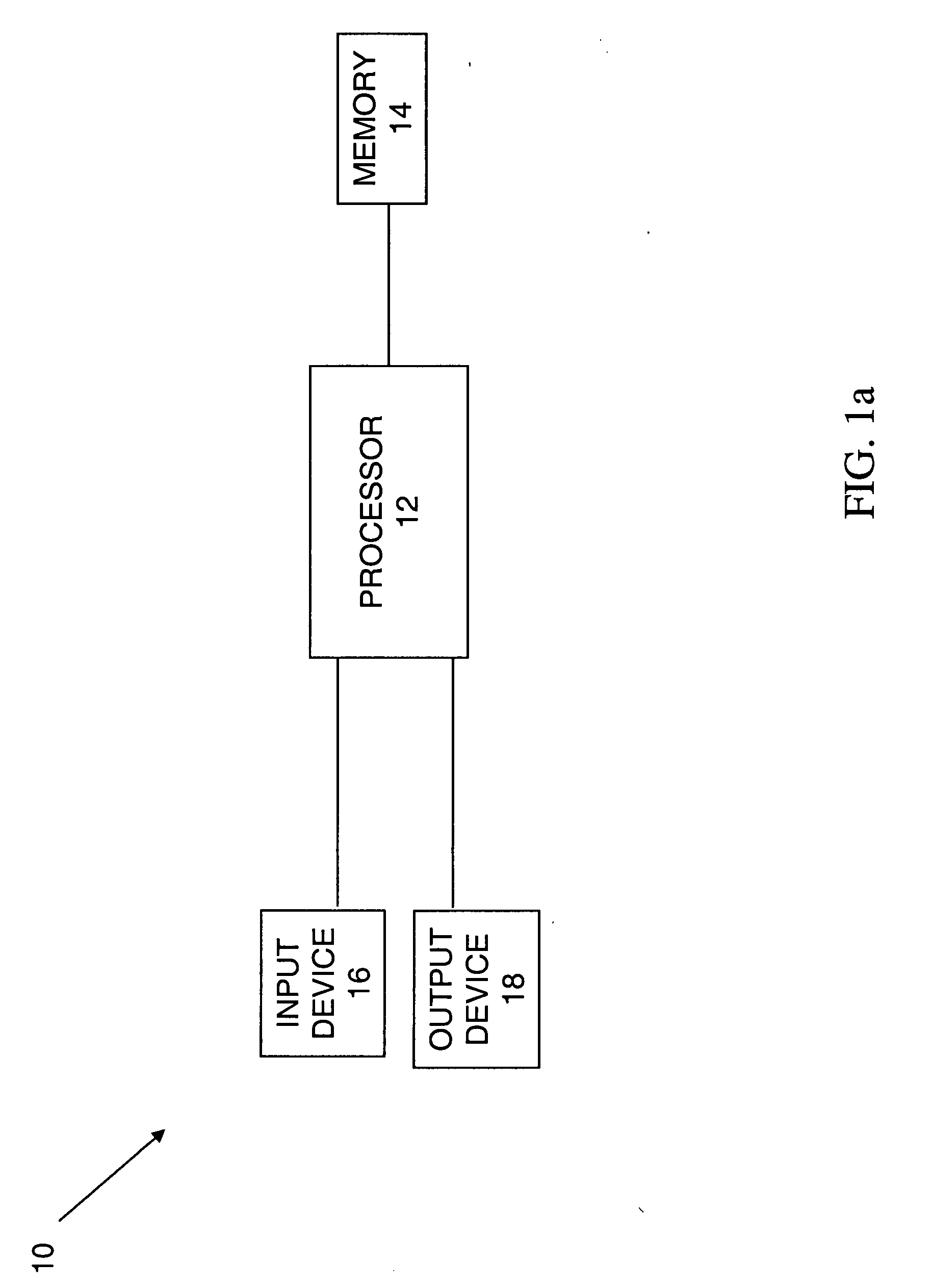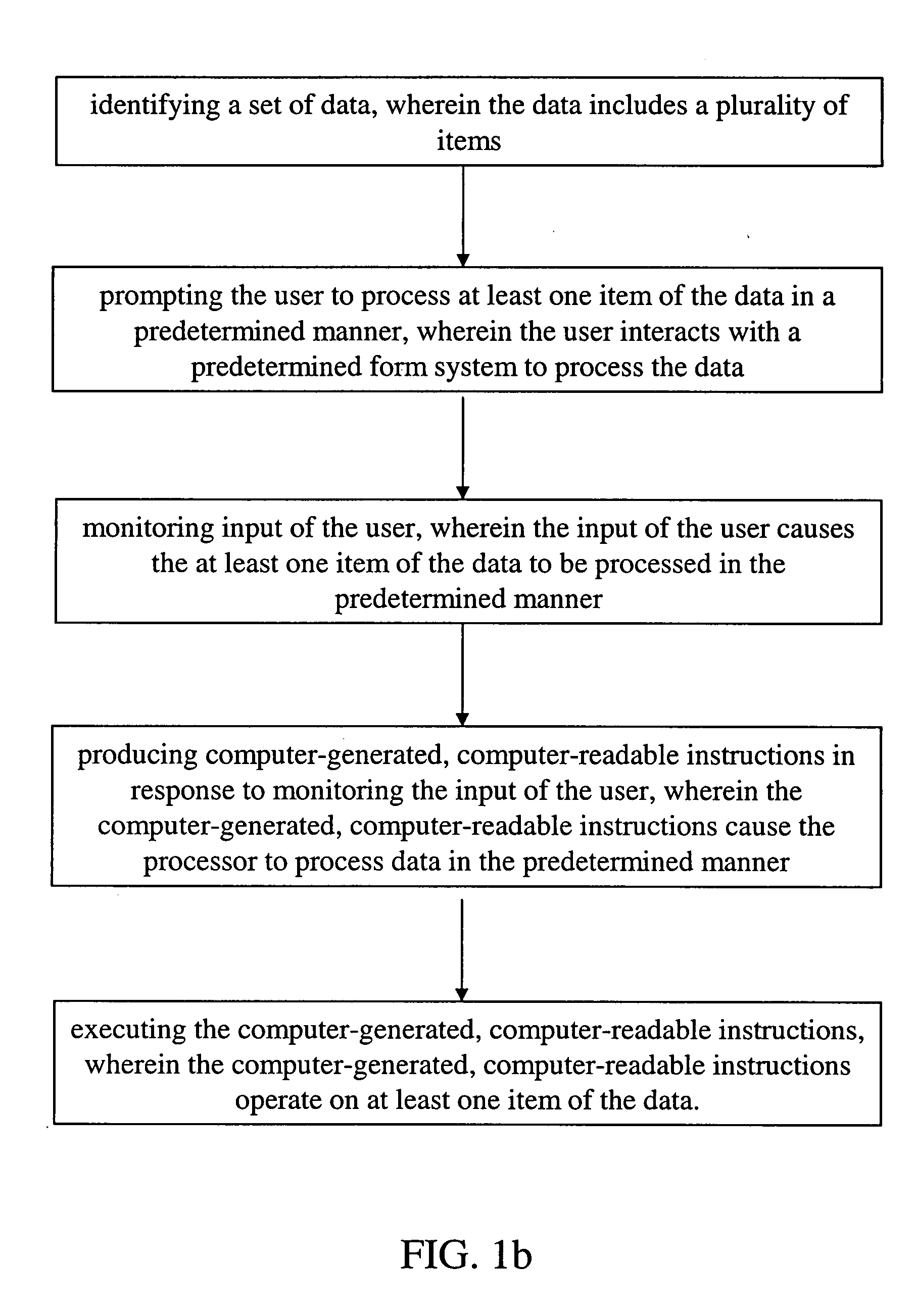Apparatuses, systems, and methods to automate a procedural task
a procedural task and automation technology, applied in the field of methods, apparatuses, systems to automate a procedural task, can solve the problems of increasing up to thousands of updates over time, often left unsupported, expensive, etc., and achieve the effect of improving performan
- Summary
- Abstract
- Description
- Claims
- Application Information
AI Technical Summary
Benefits of technology
Problems solved by technology
Method used
Image
Examples
example
[0068]FIG. 3 shows part of an example input file 40 that contains a list of employees and new office numbers. In this example task, a user must update a set of records in a database 26 with new office room numbers.
[0069]FIG. 4 illustrates one example of the user interface 22. The user starts the interaction sequence with system 10 by presenting the input file to the user interface 22. The input file may be presented to the user interface, for example, by using a conventional “browse” feature to identify the input file to the user interface, by a “drag and drop” operation, or by any other means to identify the input file to the user interface 22. In the illustrated embodiment, the user interface 22 is a frame in a standard web browser, although the user interface 22 may take other forms in other embodiments. The user interface 22 responds to the input file by presenting to the user the first example in the input file: (‘Roberson’, ‘John’, ‘6058’). The user navigates to the appropriat...
PUM
 Login to View More
Login to View More Abstract
Description
Claims
Application Information
 Login to View More
Login to View More - R&D
- Intellectual Property
- Life Sciences
- Materials
- Tech Scout
- Unparalleled Data Quality
- Higher Quality Content
- 60% Fewer Hallucinations
Browse by: Latest US Patents, China's latest patents, Technical Efficacy Thesaurus, Application Domain, Technology Topic, Popular Technical Reports.
© 2025 PatSnap. All rights reserved.Legal|Privacy policy|Modern Slavery Act Transparency Statement|Sitemap|About US| Contact US: help@patsnap.com



